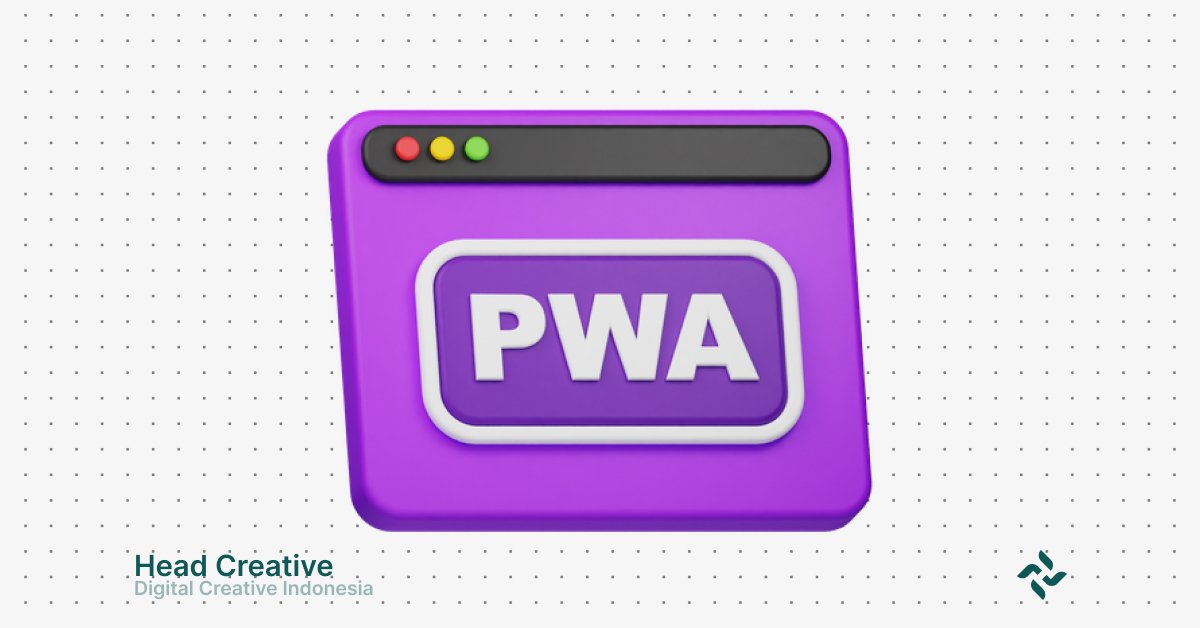What is a Progressive Web App (PWA)?
A Progressive Web App (PWA) is an innovative technology that combines the strengths of traditional websites with the advanced functionalities of mobile apps. The result is a platform that is fast, responsive, and capable of providing a user experience almost on par with native applications.
Technically, PWAs leverage technologies like Service Workers, Web App Manifests, and the HTTPS protocol to deliver seamless and secure experiences. With PWAs, users can enjoy features such as offline mode, push notifications, and direct access from their device’s home screen without needing to download the app from stores like the App Store or Google Play.
Why is Understanding PWAs Important for Businesses?
In today’s fast-paced digital era, superior user experiences are no longer optional—they are essential. Users demand easy, fast, and reliable access, and that’s where PWAs stand out as the best solution. Here are the key reasons why understanding PWAs is crucial for your business:
1. Addressing Speed and Efficiency Challenges
- Lightning-Fast Loading: Unlike traditional websites that may take time to load, PWAs are designed to load exceptionally quickly, even on slow networks.
- Offline Access: PWAs allow users to access content even when their internet connection is unavailable.
2. Strengthening Customer Relationships
- Proactive Push Notifications: With PWAs, businesses can send reminders or promotions directly to users’ devices, effectively boosting customer engagement.
- Easy Installation: Users can “install” a PWA with a single click, bypassing the need for an app store.
3. Boosting Conversions and Retention
- Studies show that 53% of users abandon a website that takes more than 3 seconds to load. PWAs help prevent this, allowing you to retain valuable potential customers.
- Case Study: Major brands like Starbucks and Pinterest reported up to a 50% increase in user retention after adopting PWAs.
4. Cost-Effective Development
- One Platform for All: PWAs work seamlessly across devices and browsers, eliminating the need to develop separate apps for iOS and Android.
- Easy Updates: Updates can be made on the server without requiring users to download a new version, saving time and effort.
How Does a Progressive Web App (PWA) Work?
PWAs leverage innovative technology to redefine how we interact with websites. Let’s explore its three core components—Service Workers, Web App Manifests, and the HTTPS protocol—along with the standout features that make PWAs a unique solution for modern businesses.
Core Components of a PWA
- Service Workers Service Workers are the backbone of a PWA. These JavaScript scripts run in the browser background, enabling key functionalities like:
- Caching Data: Reduces loading times by storing website data on the user’s device.
- Offline Mode: Keeps the website accessible even without an internet connection.
- Background Processing: Enables features like data synchronization and push notifications.
- Web App Manifest This file serves as the “identity card” of a PWA. The manifest includes:
- The app’s name and description.
- Icons displayed on the user’s home screen.
- Options for theme colors and screen orientation. The manifest allows a website to “transform” into an app that closely resembles a native application.
- HTTPS PWAs require HTTPS to ensure:
- Data Security: All communication between users and servers is encrypted.
- User Trust: HTTPS provides a sense of security, encouraging further interaction.
Key Features of Progressive Web Apps (PWAs)
PWAs offer an array of advanced features that make them an ideal choice for businesses:
- Offline Mode
- Functionality Without Internet: Service Workers enable users to access cached content even when offline.
- Enhanced User Experience: Provides seamless access without “connection interrupted” errors.
- Push Notifications
- Deliver Important Messages: Such as promotions, discounts, or updates.
- Boost Retention: Relevant notifications encourage users to revisit your platform.
- Installability
- Direct Installation: PWAs can be installed directly on users’ devices without needing app stores.
- Space-Efficient: Requires less storage compared to native apps.
- Quick Access: The app’s icon appears on the home screen for instant use.
How PWAs Differ from Native Apps
Here’s a comparison of key features between PWAs and native apps:
| Feature | PWA | Native App |
|---|---|---|
| Platform | Runs in browsers, compatible with all OS | Must be built separately for iOS and Android |
| Installation | No app store required | Installed via app stores (Google Play, App Store) |
| Development Cost | Lower, single codebase for all platforms | Higher, requires separate development for each platform |
| Updates | Automatic through the server | Users must download updates |
By combining cutting-edge technologies such as Service Workers, Web App Manifests, and HTTPS, Progressive Web Apps (PWAs) deliver a secure, fast, and efficient solution. Their standout features—including Offline Mode, Push Notifications, and Installability—make them a superior alternative to traditional native applications.
Not only do PWAs provide a seamless user experience, but they also enable businesses to save time and development costs. If you aim to enhance your business’s digital efficiency, PWAs are the answer.
Benefits of Progressive Web Apps (PWA) for Businesses
In today’s competitive digital landscape, delivering the best user experience is key to winning customer loyalty. Progressive Web Apps (PWA) emerge as a modern solution that not only enhances performance but also provides strategic advantages for your business. Let’s explore the key benefits of PWAs for businesses!
1. Boosting Speed & Performance
Speed is everything in the online world. Research shows that 53% of users abandon websites that take more than 3 seconds to load. With PWA, this issue can be resolved effectively.
How Does PWA Enhance Speed?
- Smart Caching: PWAs leverage Service Worker technology to store essential data, enabling instant page loading even on slow connections.
- Fast Rendering: PWAs prioritize loading key elements first, ensuring a smooth user experience.
Impact on Business
- Reduced Bounce Rate: Users are less likely to leave your website due to slow loading times.
- Longer Engagement: A fast-loading site encourages users to explore more pages.
2. Enhanced User Experience
PWAs are designed to deliver a seamless, interactive experience akin to native apps but without the hassle.
PWA UX Advantages
- Responsive Design: PWAs automatically adjust to users’ devices, whether it’s a smartphone, tablet, or desktop.
- Offline Mode: Users can still access content even without an internet connection, a valuable feature in areas with limited connectivity.
- Smooth Navigation: PWAs eliminate interruptions such as lag or loading issues.
Why This Matters for Businesses
- Increased Customer Satisfaction: A smooth user experience enhances trust and satisfaction with your brand.
- Improved Loyalty: Satisfied users are more likely to return to your website.
3. Lower Development Costs
Building native apps for multiple platforms (iOS and Android) often requires significant time and financial investment. PWAs offer a cost-effective solution without compromising quality.
Why PWAs Are More Economical
- One Codebase for All Platforms: PWAs require a single codebase to work across all devices and browsers.
- No Distribution Fees: You don’t need to pay to distribute your app on app stores like Google Play or the App Store.
- Easy Updates: Updates are applied directly to the server, eliminating the need for users to download the latest version.
Business Advantages
- Budget Efficiency: More funds can be allocated to marketing or other innovations.
- Faster Time-to-Market: Shorter development cycles mean your product can launch quicker.
4. Driving Conversions & Retaining Customers
PWAs are not just about technology—they are a strategy to enhance engagement, conversions, and customer retention.
Real-World Case Studies
- Starbucks: After adopting PWA, Starbucks saw a twofold increase in active mobile users.
- Pinterest: With PWA, Pinterest improved engagement by 60% and reduced user acquisition costs by 50%.
Why PWAs Are Effective for Conversion
- Fast Loading = Higher Conversions: Quick-loading sites increase the likelihood of users completing purchases.
- Push Notifications: Sending reminders or promotions directly to users’ devices encourages them to return and make transactions.
Leverage Our Services: Website Development Services
How to Start Adopting PWA for Your Business
Adopting a Progressive Web App (PWA) is a strategic move to elevate your business in the digital era. However, like any technology project, successfully implementing a PWA requires careful planning and precise execution. Here’s a step-by-step guide to help you embark on your PWA journey.
1. Understand Your Business Needs
The first step in adopting a PWA is to identify your specific business requirements. Every business has different goals, and it’s crucial to ensure that PWA is the right solution. Consider these questions:
Who is your target audience?
- If your audience frequently uses mobile devices with limited internet connectivity, a PWA is an ideal solution.
What are your primary objectives?
- Do you aim to enhance website speed, reduce bounce rates, or increase customer engagement?
Is your website mobile-friendly?
- PWAs require a responsive website foundation. If your site isn’t mobile-friendly, prioritize fixing this before transitioning to a PWA.
Tip: Focus on Priorities
Start with basic PWA features like offline mode or fast loading before incorporating advanced functionalities such as push notifications.
2. Use Popular Tools for PWA Development
Fortunately, you don’t have to build a PWA from scratch. Several tools are designed to simplify the development and optimization of PWAs. Here are some recommended tools:
Lighthouse
- A Google tool that audits your website’s performance, including PWA compatibility.
- Provides scores and recommendations to improve speed, accessibility, and other critical aspects.
Workbox
- A JavaScript framework by Google for managing caching and Service Workers.
- Helps implement features like pre-caching and more complex caching strategies.
PWA Builder
- A simple tool to quickly convert your website into a PWA.
- Offers step-by-step guidance to ensure your site meets PWA standards.
3. Tips to Measure PWA Success After Implementation
Once your PWA is live, it’s essential to evaluate its impact on your business. Track these key metrics:
1. Speed and Performance
- Metrics to Monitor: Loading time, First Contentful Paint (FCP), and Time to Interactive (TTI).
- Tools to Use: Lighthouse or PageSpeed Insights to track performance.
2. User Engagement
- Metrics to Monitor: Bounce rate, time spent on the site, and pages viewed per session.
- Why It’s Important: Higher engagement indicates an improved user experience.
3. Conversion and Retention
- Metrics to Monitor: Conversion rates, customer retention, and average transaction value.
- Tip: Compare data from before and after PWA implementation to identify significant changes.
4. PWA Feature Usage
- Metrics to Monitor: The number of users installing your PWA and their interaction with push notifications.
- Why It’s Important: Demonstrates the effectiveness of these features in attracting and retaining users.
Final Step: Iteration and Optimization
PWAs are an evolving technology, and continuous iteration is key to long-term success. Use insights from your metrics to:
- Identify areas for improvement.
- Add new features relevant to customer needs.
- Optimize caching strategies and performance.
Conclusion
Progressive Web Apps (PWAs) are a modern solution that combines the strengths of traditional websites and mobile applications to deliver an optimal user experience. With features like fast access, offline mode, and push notifications, PWAs enable businesses to provide services that are faster, more efficient, and highly interactive. Additionally, with lower development costs compared to native apps, PWAs offer budget efficiency without compromising quality.
For businesses, PWAs are more than just a tool for enhancing speed and performance—they are a strategy to boost customer engagement, optimize conversions, and foster loyalty. With tools like Lighthouse and Workbox, along with measurable metrics, you can ensure a successful PWA implementation.
In today’s competitive digital landscape, adopting a PWA is a strategic investment that can help your business stand out in the market. Take the first step by understanding your business needs and leveraging this technology to create an impressive user experience.


